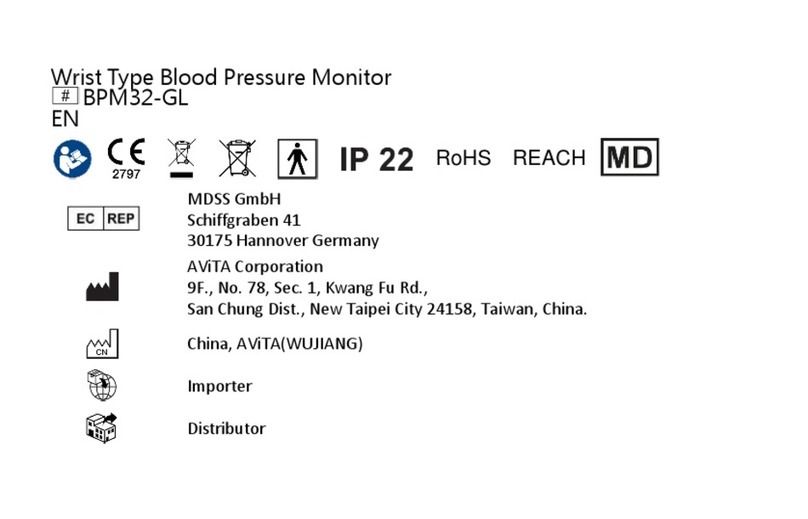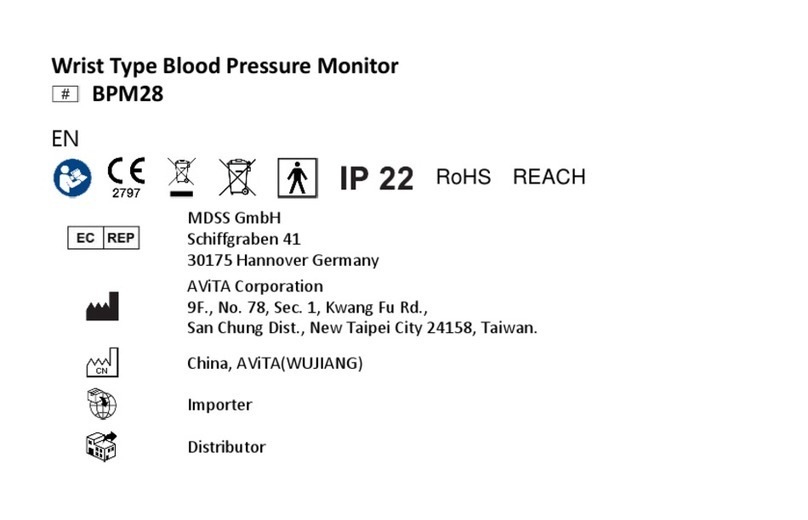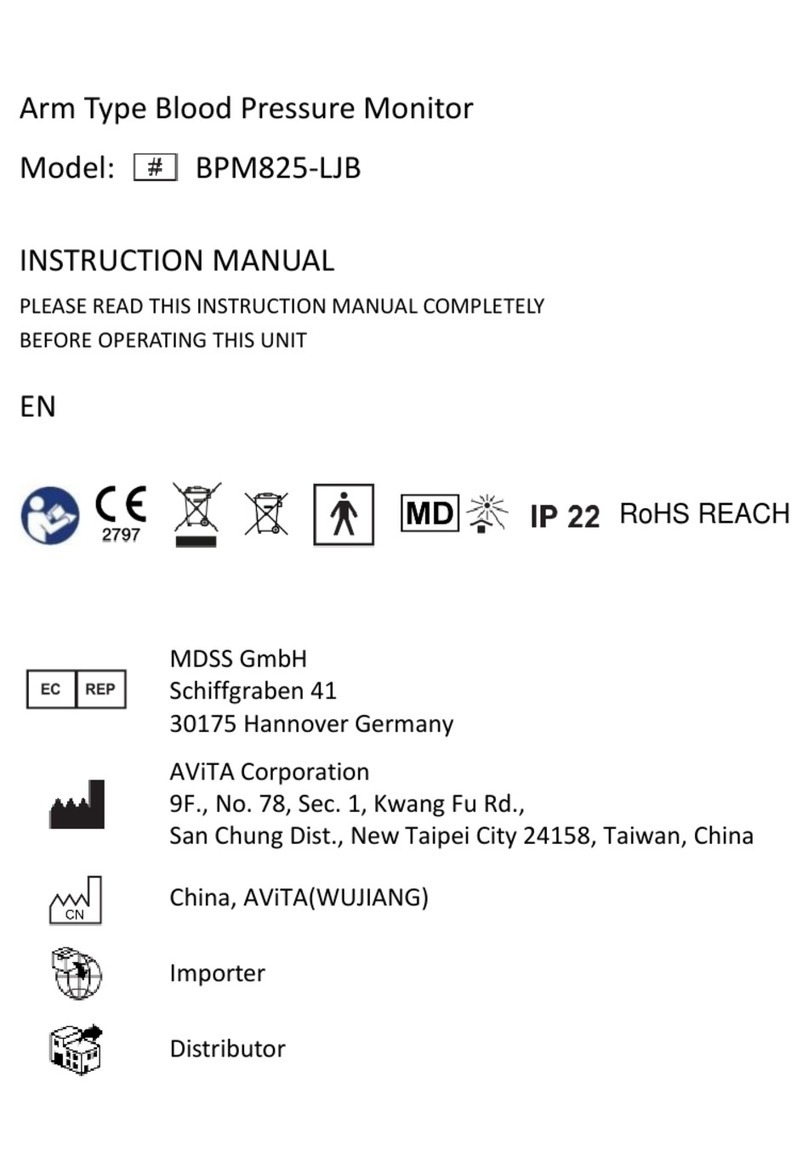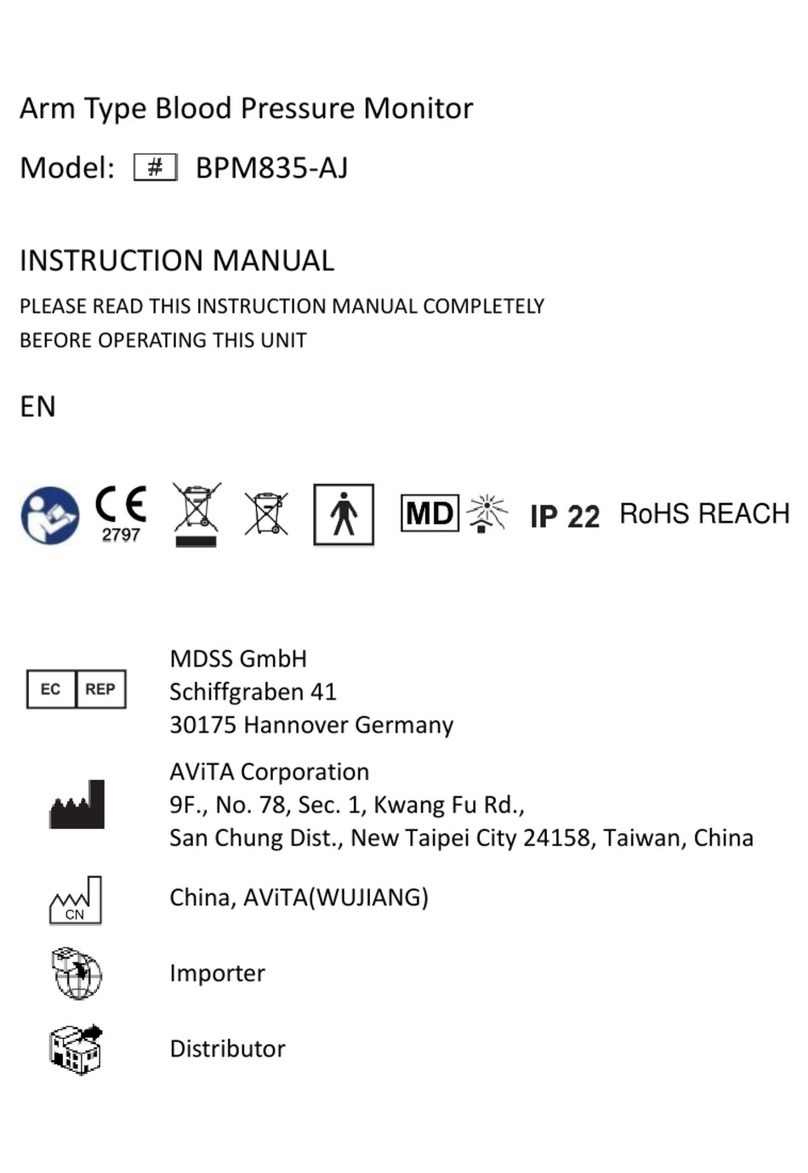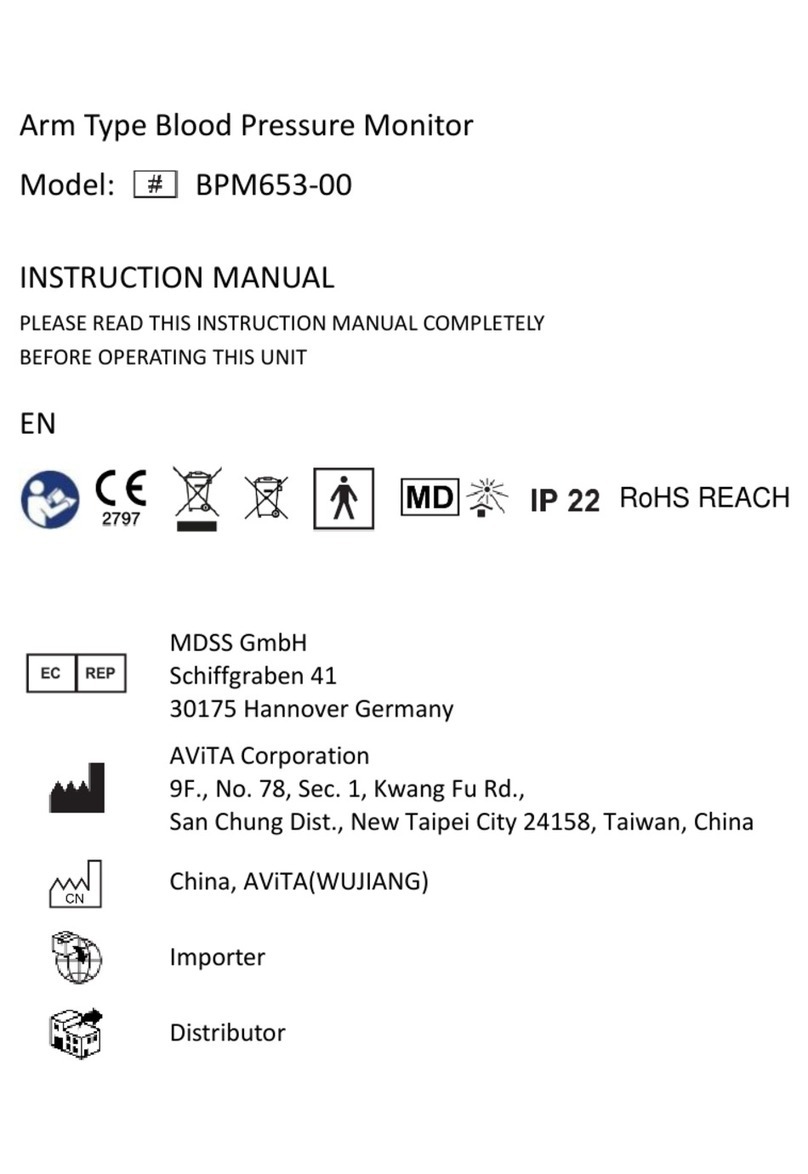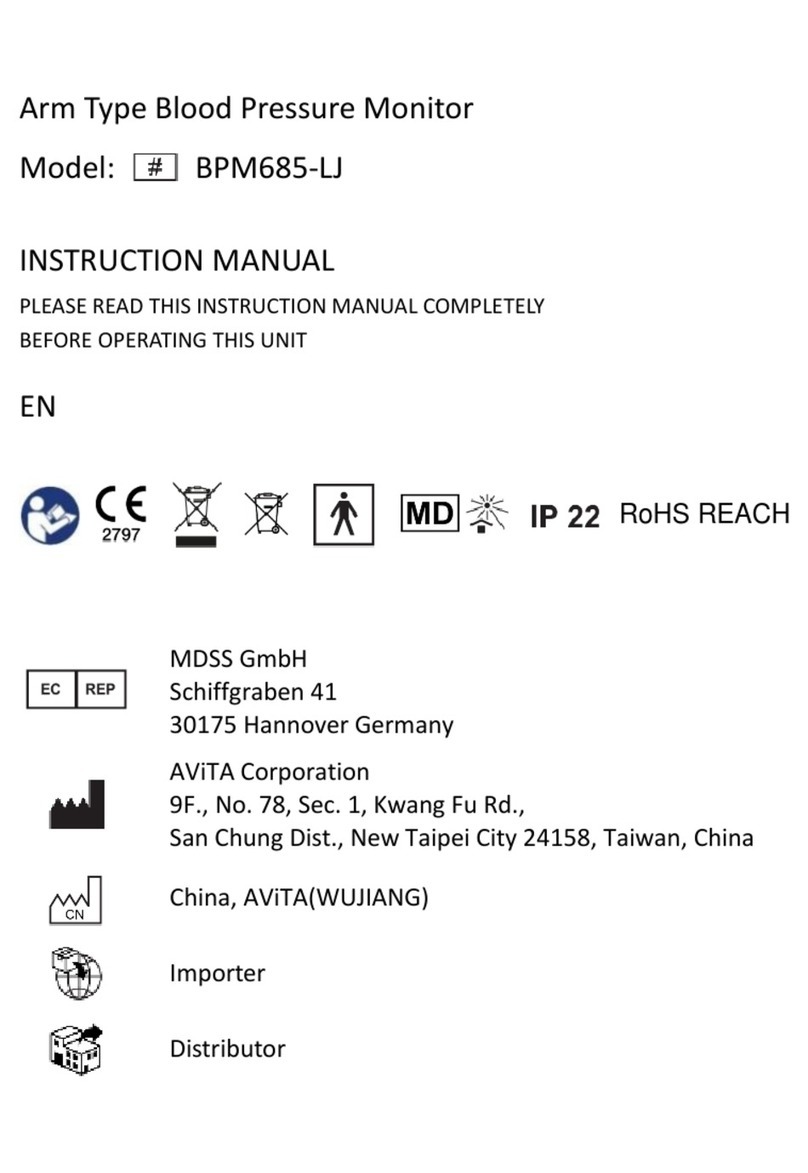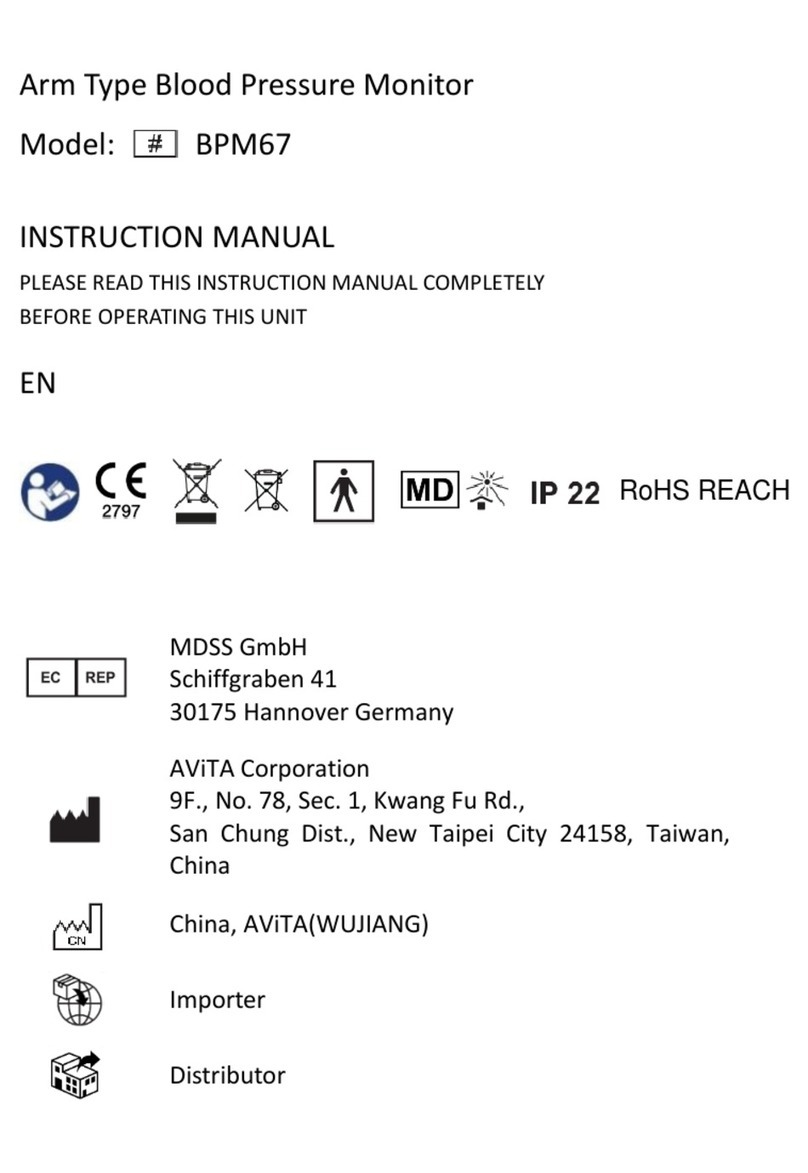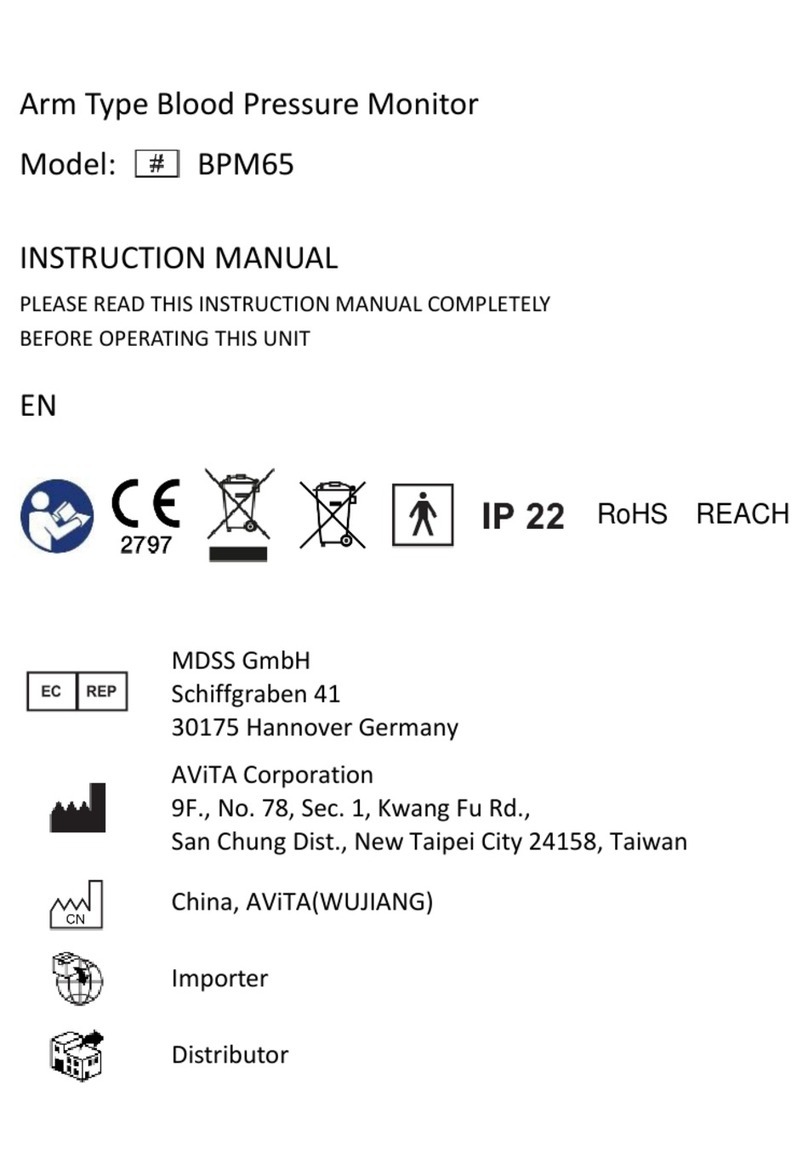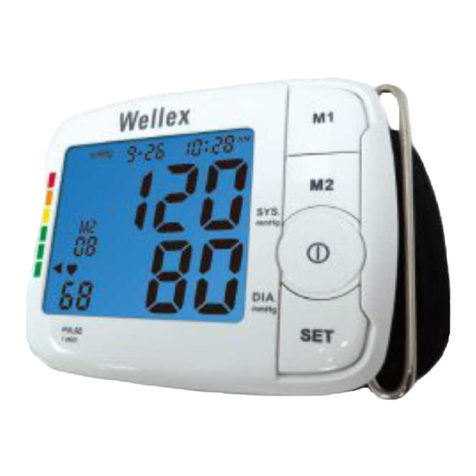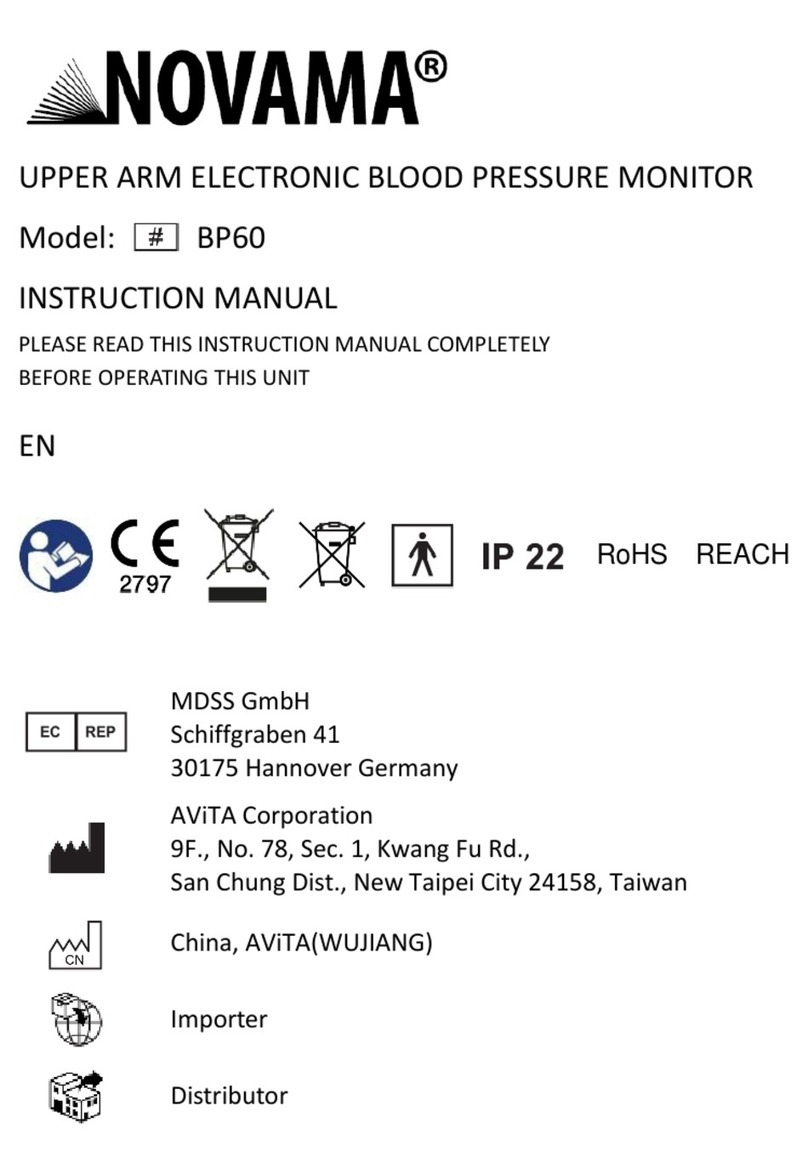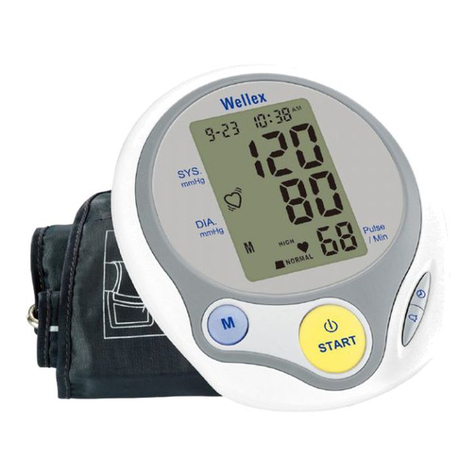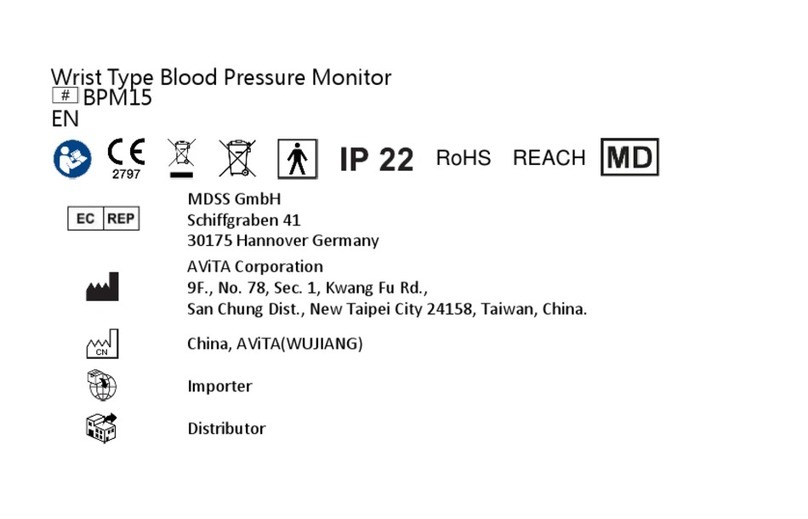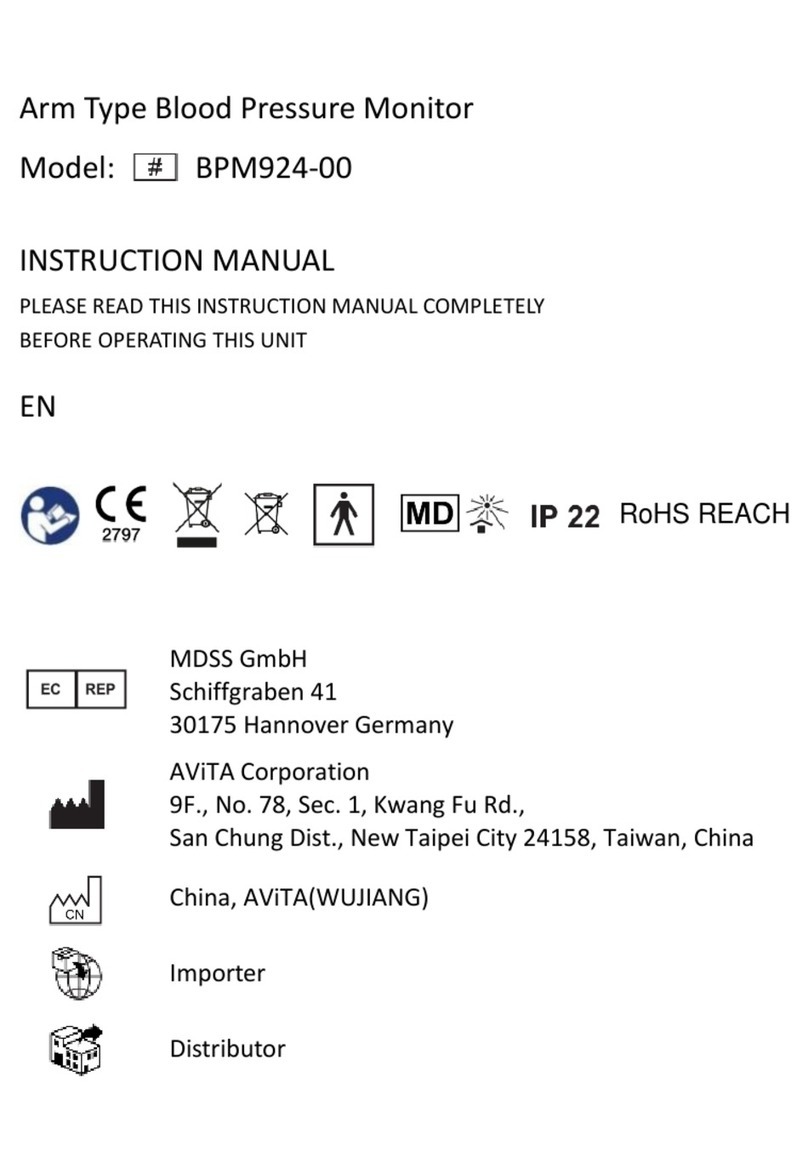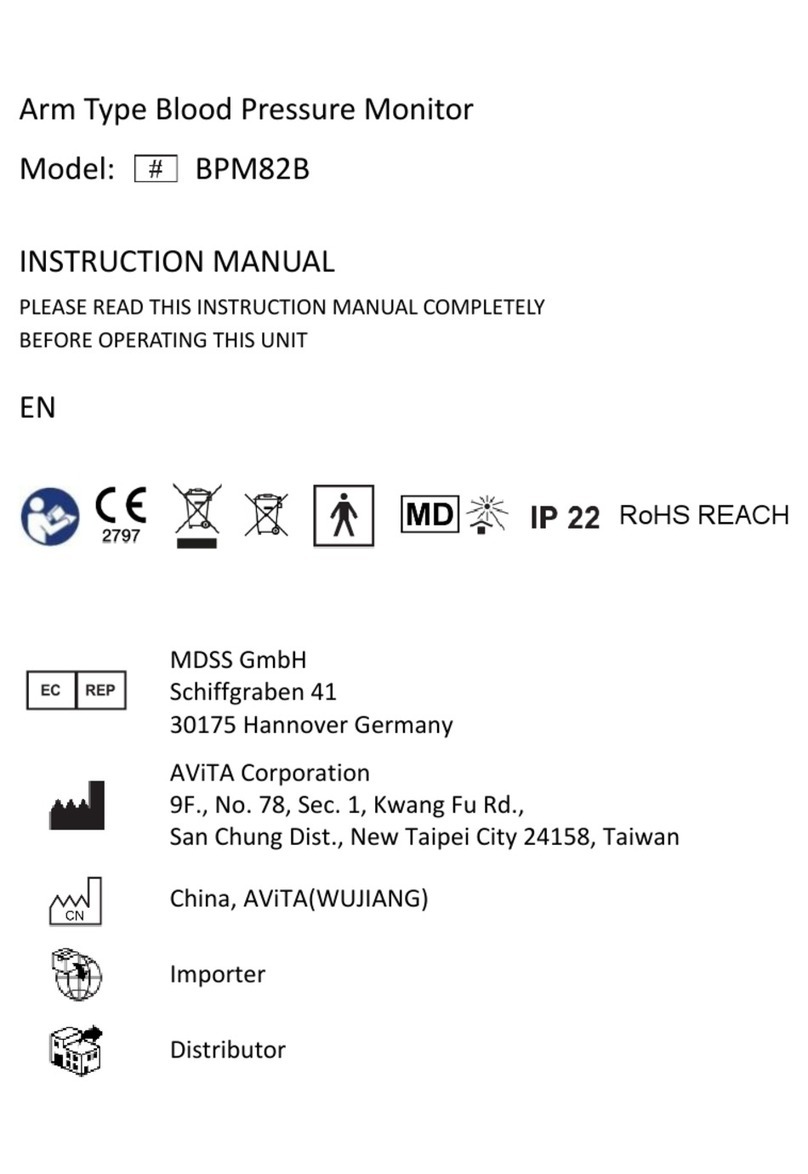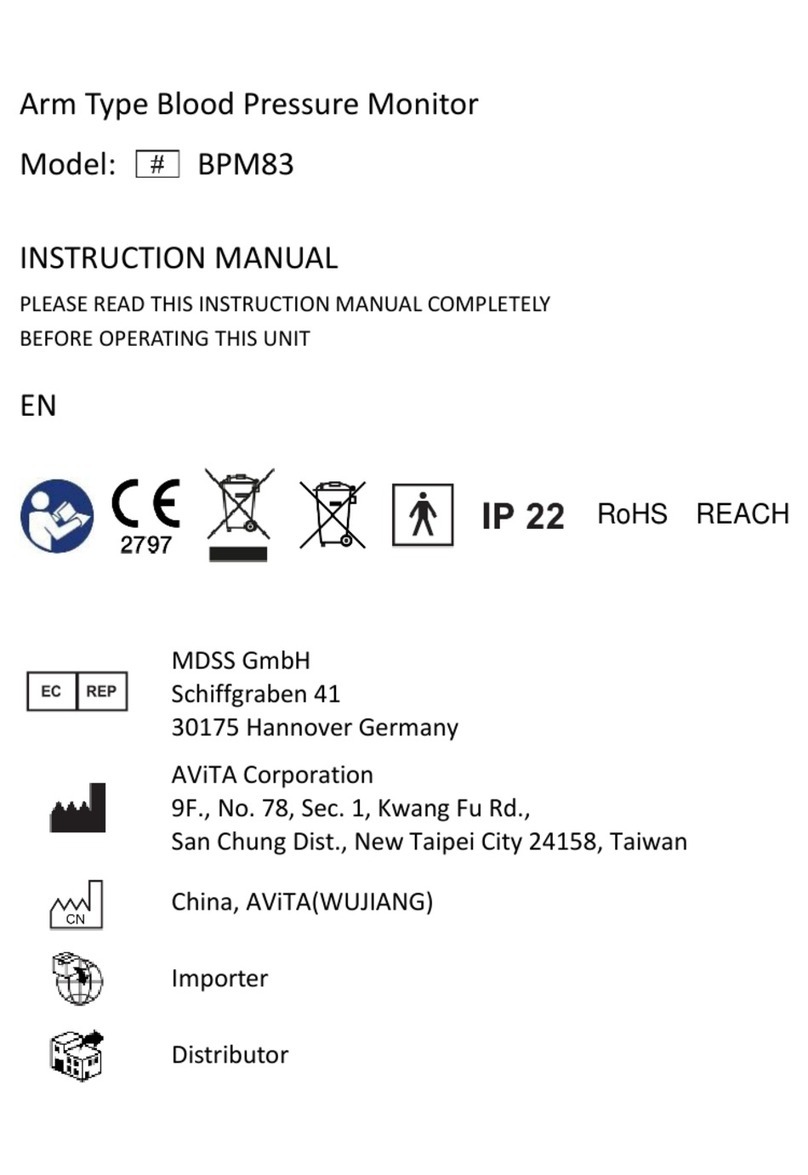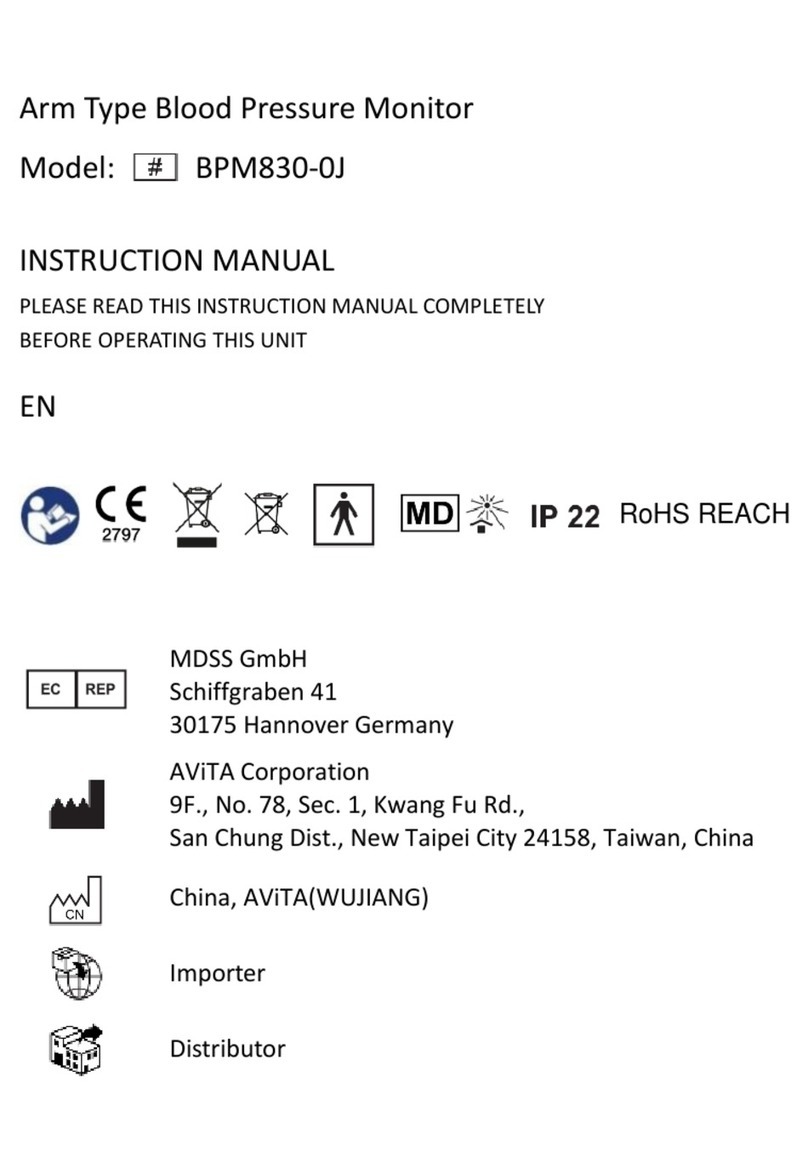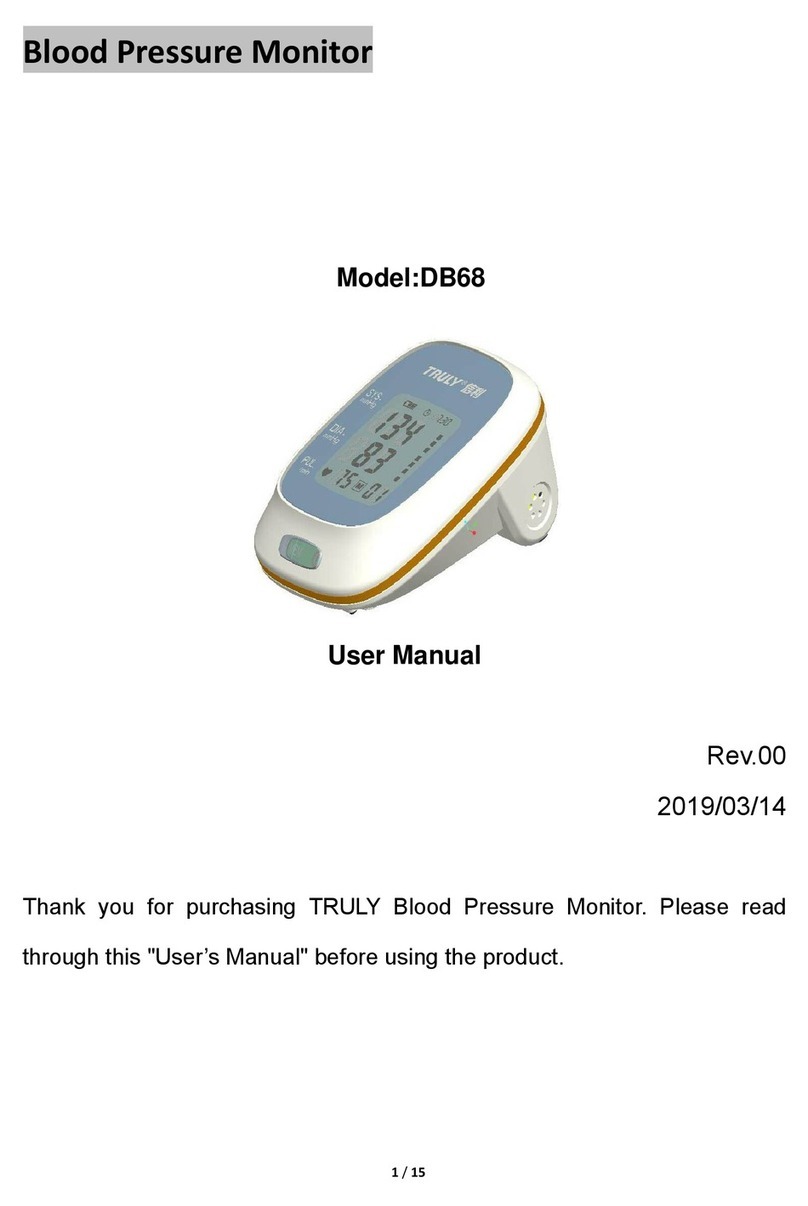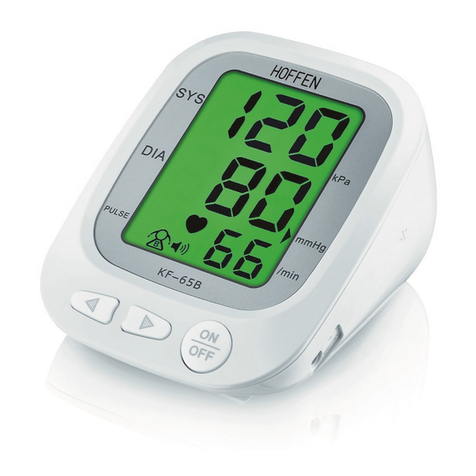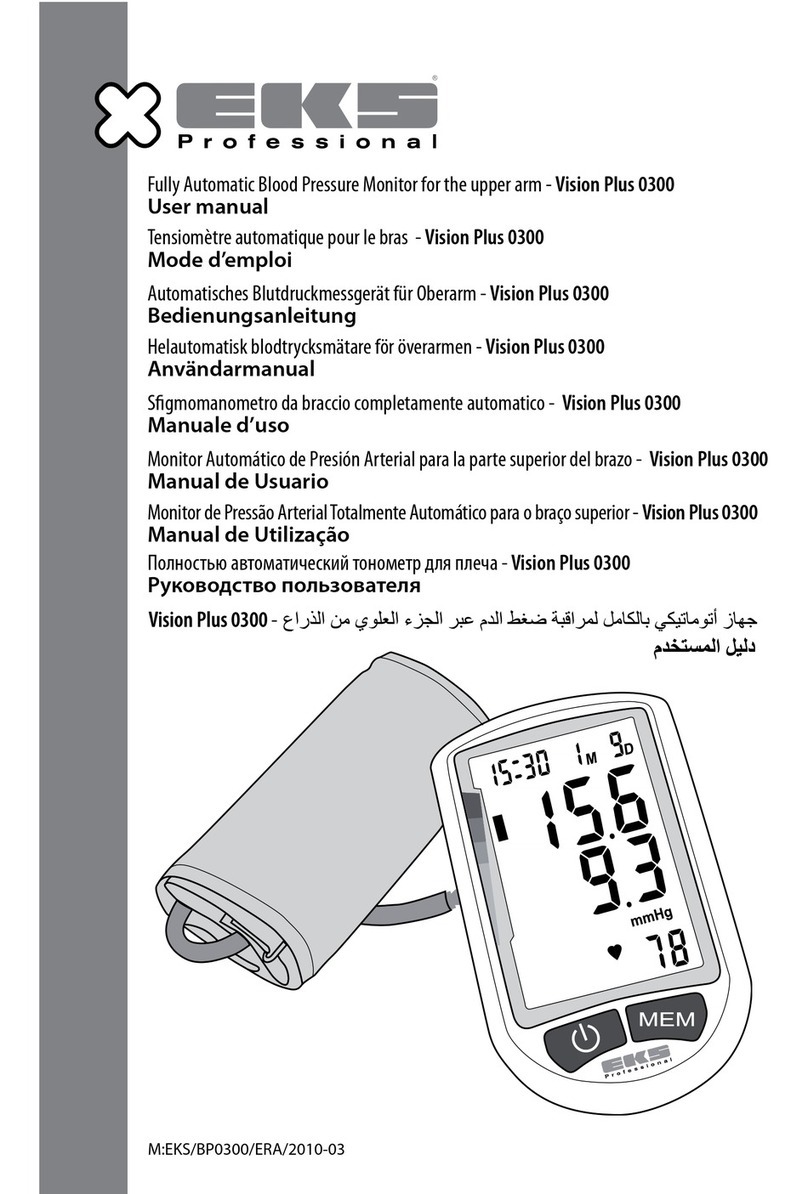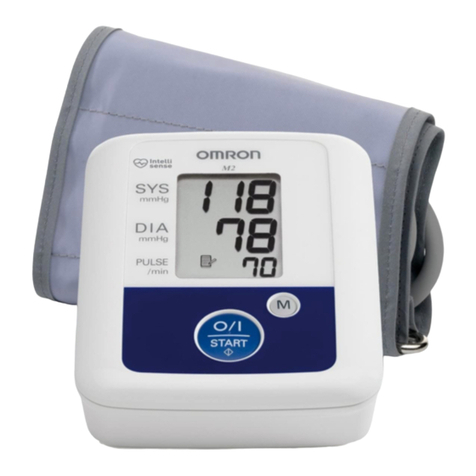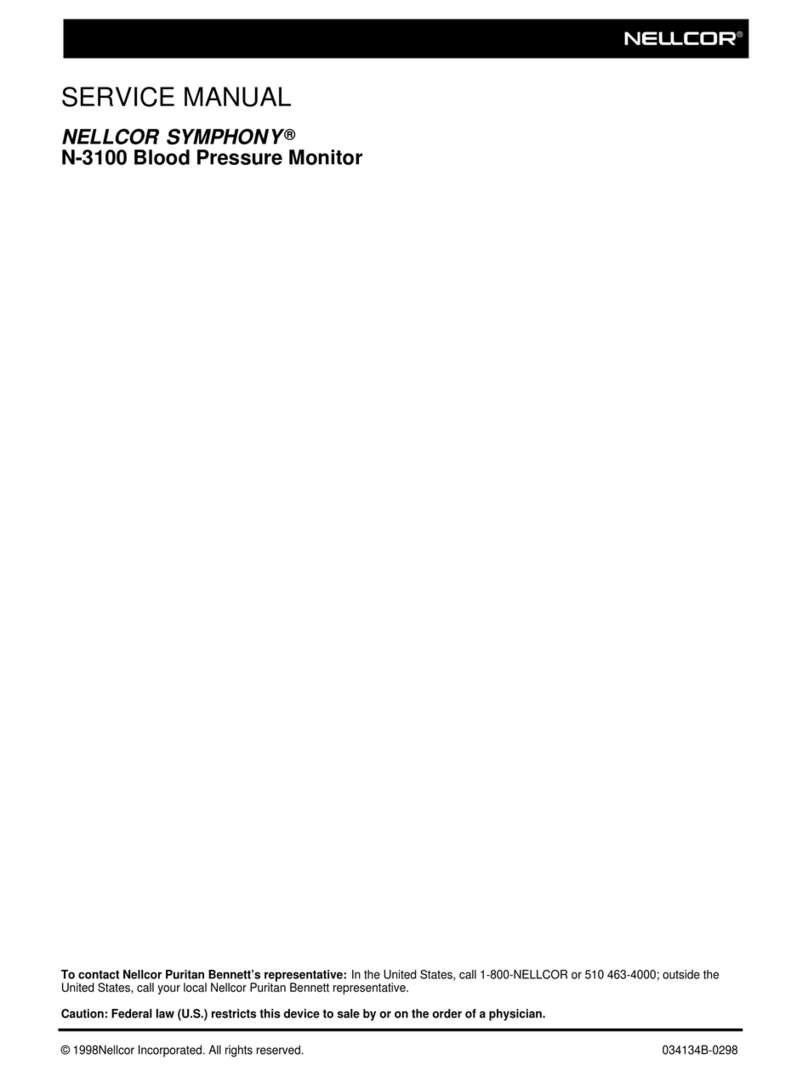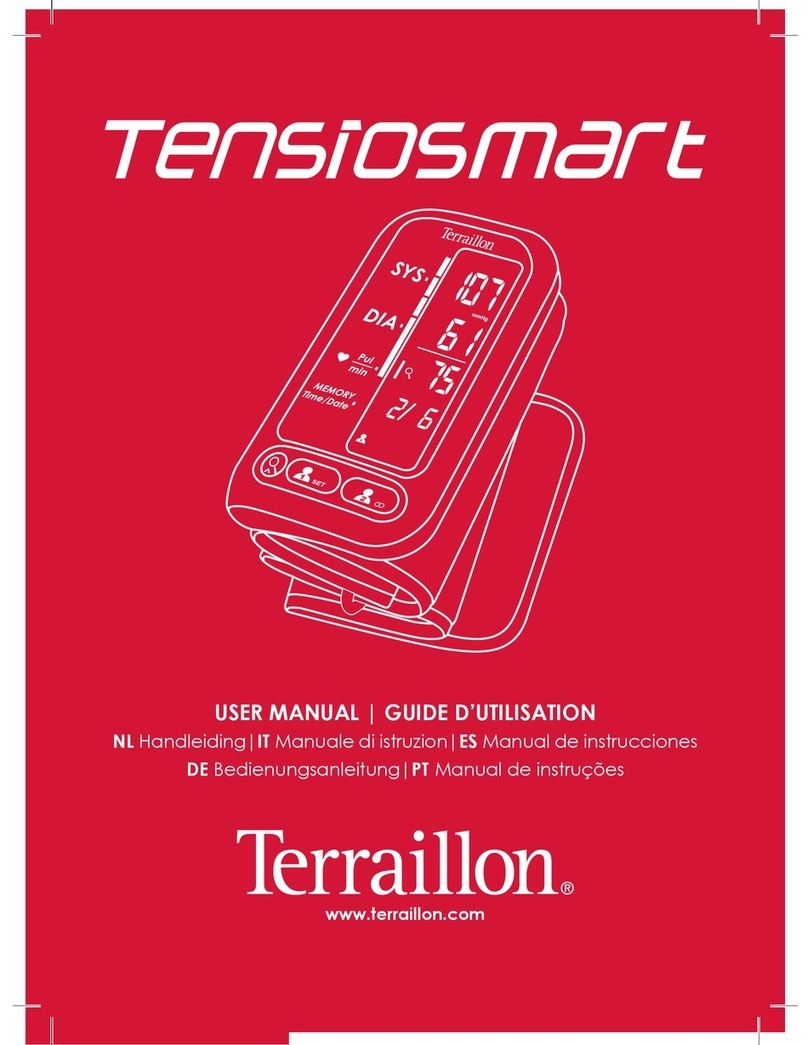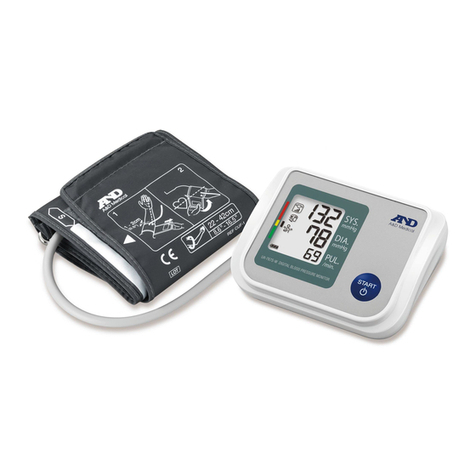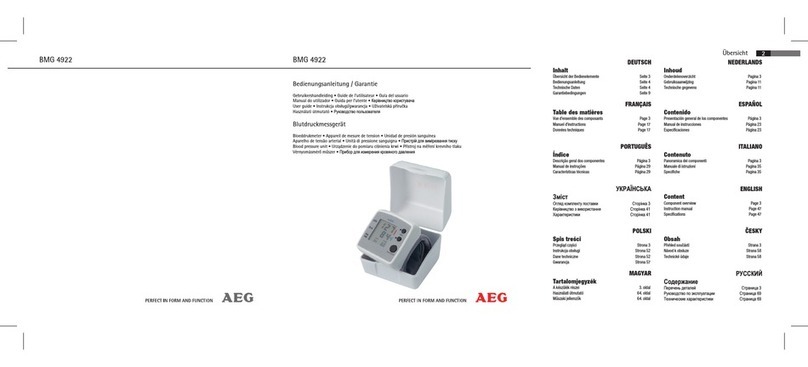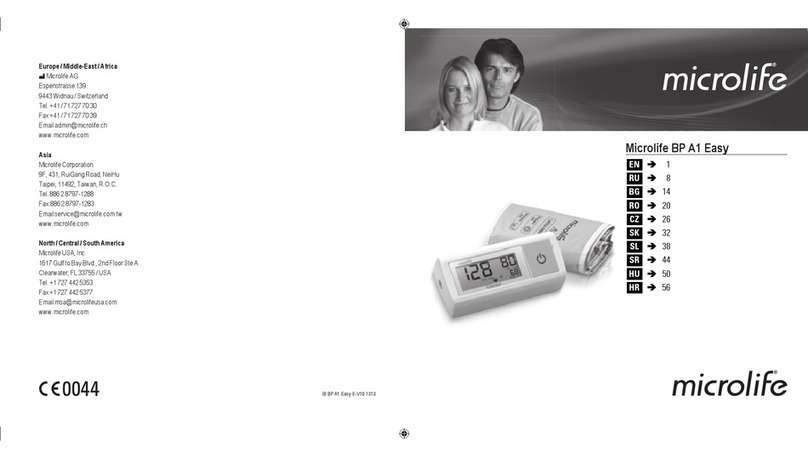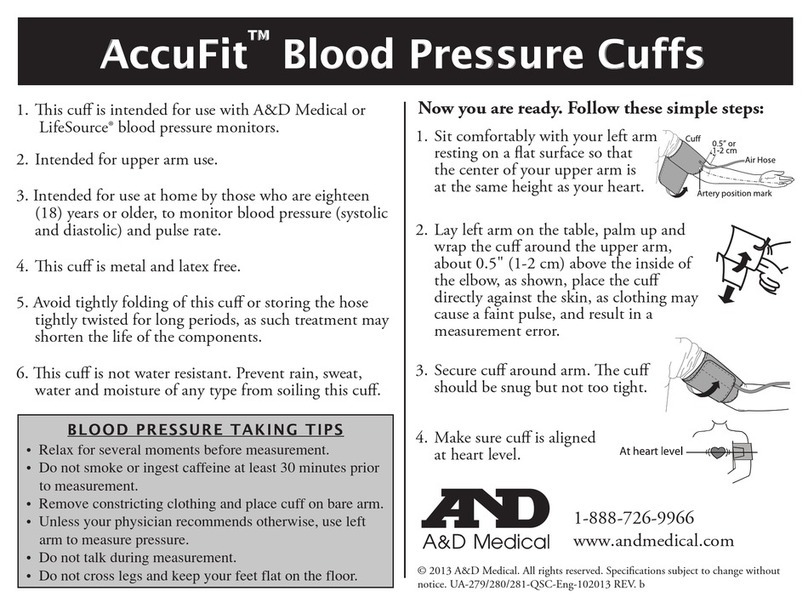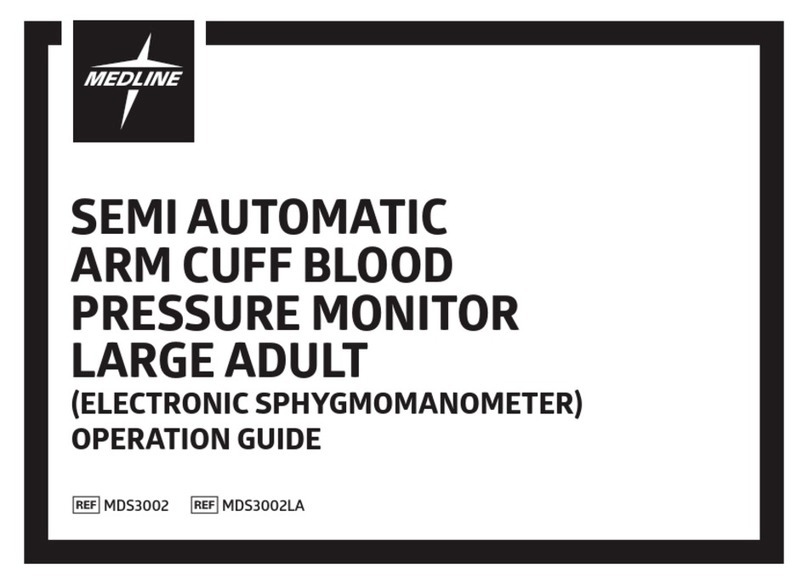
2
•If you are prone to hematoma, do not put on a cuff nor carry out a
blood pressure measurement.
Consult your doctor before measuring your own blood pressure if…
•If you have any of the following conditions, it is essential you consult
your doctor before using the device: cardiac arrhythmia,
Cardiovascular disease, very low blood pressure, diabetes,
circulatory problems, diabetes, liver function disorders or narrowing
of blood vessels, blood disorders, pregnancy, pre-eclampsia,
hypotension, chills, shaking, tremors, implanted electrical implants
(e.g. pacemaker).
•You are on dialysis or taking anticoagulant medication
(anticoagulants), platelet aggregation inhibitors or steroids.
•You tend to bruise easily and/or are sensitive to pressure pain.
CAUTION:
•Beware of blood flow interference and resulting harmful injury to the
patient caused by continuous cuff pressure.
•Do not use the device at the same time as other medical electrical
devices (ME equipment). This could lead to a malfunction of the
device and/or an inaccurate measurement.
•Measurement results fundamentally depend on the measurement
location and the position of the patient (sitting, standing, reclining).
They are also influenced by e.g. physical activity and physiological
preconditions of the patient. For comparable values, carry out the
measurement in the same location and in the same position.
•Do not use the device outside of the specified storage and operating
conditions. This could lead to incorrect measurements.
•Please note that when inflating the cuff, the functions of the limb in
question may be impaired.
•During the blood pressure measurement, the blood circulation must
not be stopped for an unnecessarily long time. If the device
